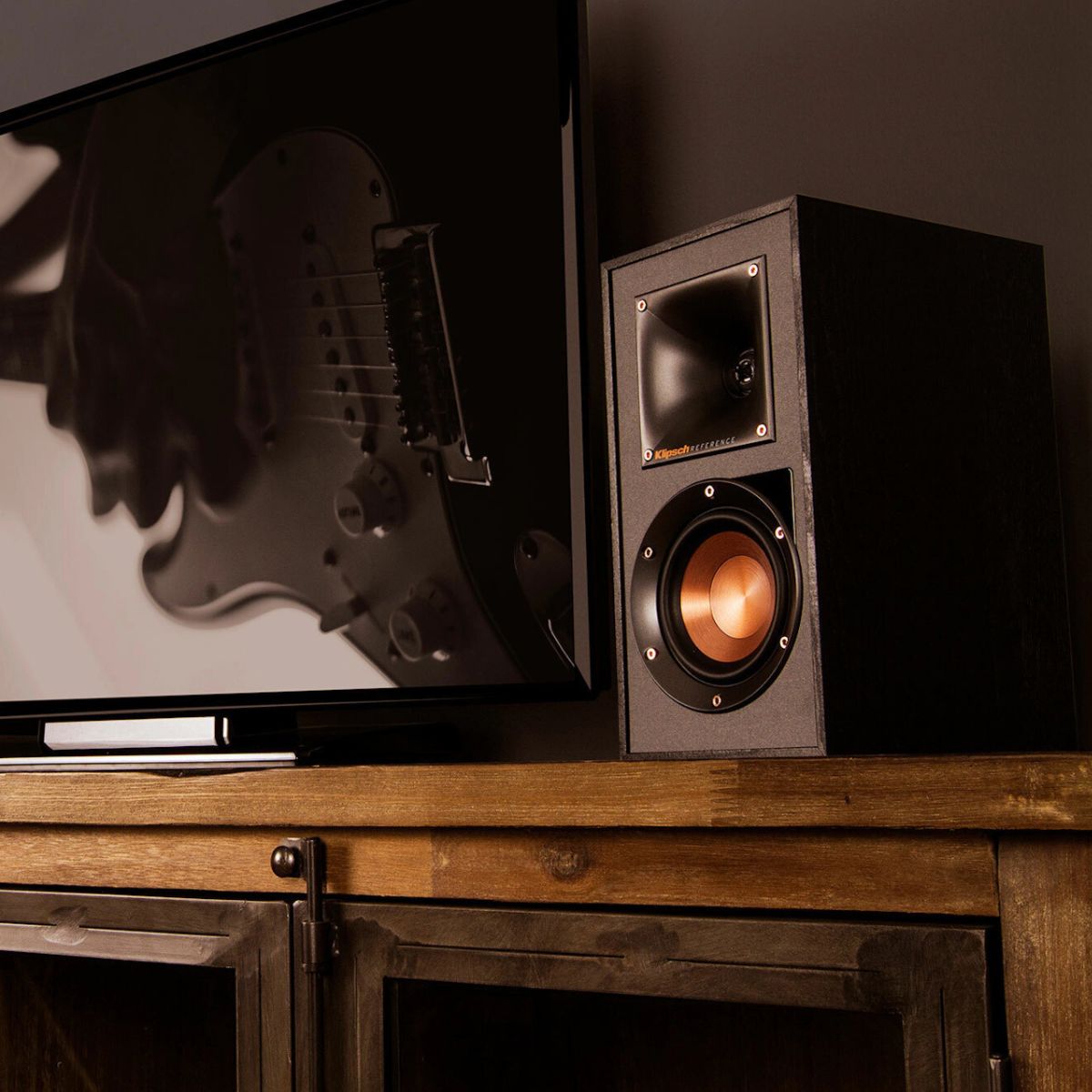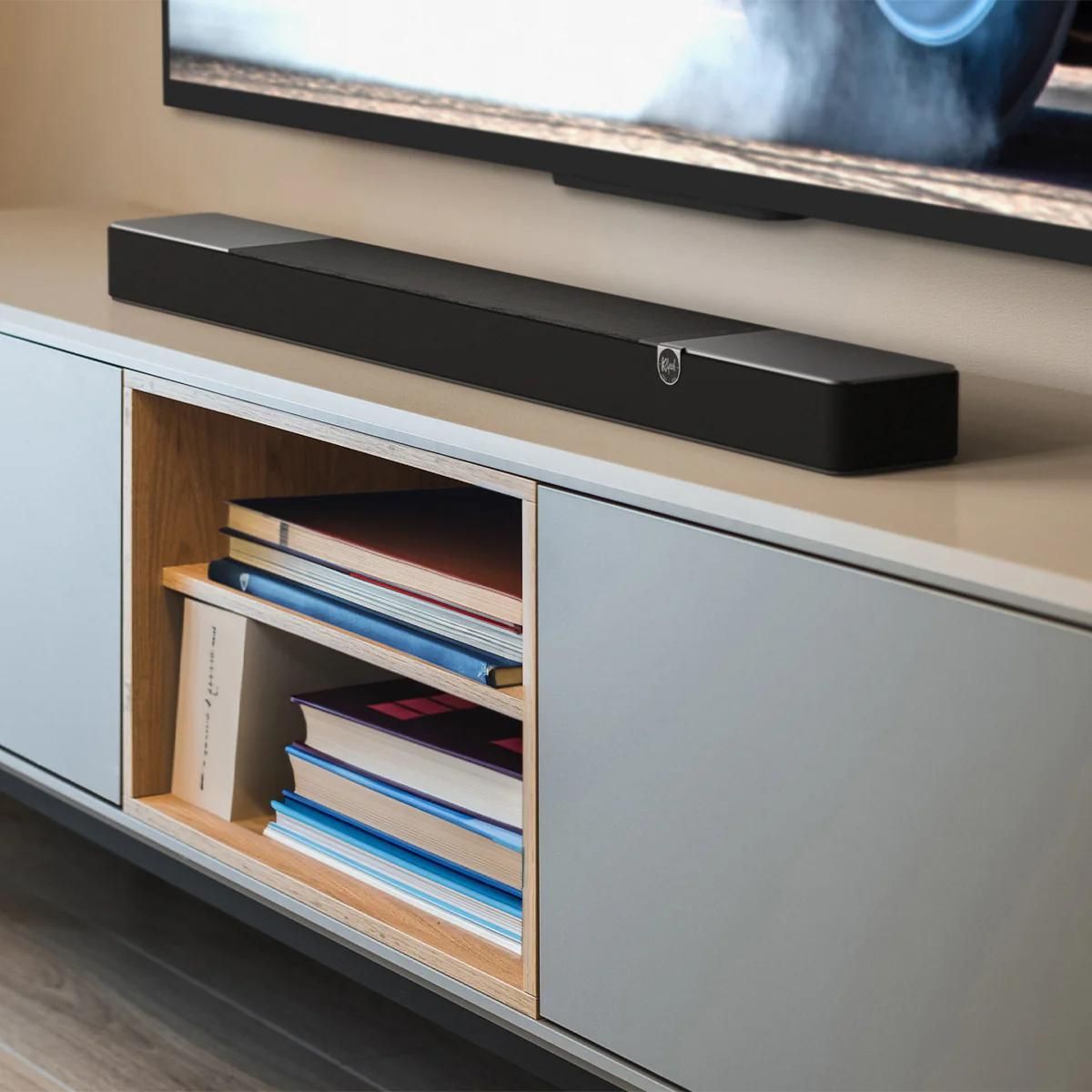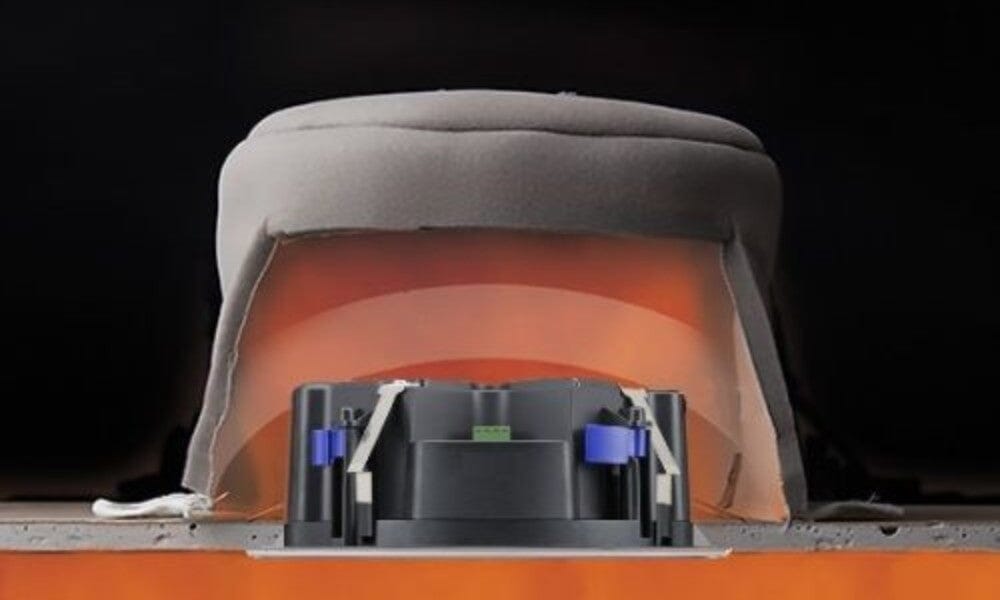Ceiling speakers have become increasingly popular in modern homes, offering discreet, high-quality audio.
But as with any structural alteration to your ceilings, installing ceiling speakers raises important considerations around safety and building regulations.
One of the most common questions is whether or not fire hoods are needed for ceiling speakers.
In this blog post, we’ll discuss what fire hoods are, why they might be required and how to determine whether you need them for your setup.
What Are Fire Hoods?
A ceiling speaker fire hood is a protective enclosure, usually made from fire-resistant or fire-retardant materials, which is placed over a ceiling speaker in the void (the space in the ceiling cavity).

The main purpose of a fire hood is to help maintain the fire integrity of the ceiling.
When you cut a hole in the ceiling for a speaker, you’re effectively creating a potential route for fire and smoke to spread from one room to another.
Fire hoods are designed to slow down this spread, giving occupants more time to evacuate and minimising structural damage.
Key Features of Fire Hoods
- Heat-Resistant Materials: Most fire hoods are crafted from specialised fabrics that are designed to expand and seal in the event of a fire.
- Easy to Install: They typically come with simple fastening systems, allowing quick installation around the speaker. Once installed they’re completely hidden within your ceilings.
- Acoustic & Thermal Protection: Aside from fire safety, acoustic fire hoods also help to improve the sound quality and reduce sound leakage into rooms above.
Why Fire Hoods Are Needed
Let’s start by saying that your ceiling speakers are highly unlikely to ever set fire!
The fire hoods are not there to protect the ceiling speaker, or protect you from the ceiling speaker itself.
Imagine that you have ceiling speakers installed within your kitchen ceiling, if you were unlucky enough to have a fire start in the kitchen, the ceiling speaker would quickly melt leaving a large hole through to the next room.
This would allow the fire to spread quickly into the room above (perhaps a kids bedroom?).
There are three main reasons why you need fire hoods;
-
Compliance with Building Regulations: In the UK, building regulations focus on slowing or stopping the spread of fire between different parts of a property with a standard fire rating of 1 hour being the most common.
Cutting holes in the ceiling to install speakers can compromise this fire barrier.
Fire hoods help restore the ceiling’s ability to resist fire and smoke spread, keeping the property compliant with fire safety regulations.
If you have building control involved in your project then we’d definitely recommend speaking to them if you’re unsure about whether or not you should fit the fire hoods. -
Protecting Occupants & Property: Installing fire hoods can help contain a fire to the point of origin for longer, giving people more time to escape.
By limiting the movement of smoke and flames, you can significantly reduce the risk of fire damage. -
Preserving Acoustic & Thermal Integrity: Acoustic fire hoods are also designed to reduce the transfer of sound between floors or rooms.
If your aim is to keep sound in (or out), fire hoods with acoustic benefits can be very effective.
When Do You Need Fire Hoods?
Whether you need fire hoods depends on several factors including your local building regulations, the type of building you have, whether there is a habitable room above and the specific rating of the ceiling.
At TECH4 we recommend installing fire hoods on all ceiling speakers, that way you can’t go wrong!
Here are some scenarios to keep in mind:
- New Builds & Renovations: If you’re working on a new build project or renovating an existing property, it’s likely that your local building control will require the use of fire hoods. In many cases, building regulations require that any hole cut into a fire-rated ceiling be properly sealed or protected.
- Multi-Storey Properties: If your speakers are being installed in the ceiling of a multiple-storey house or building, you’ll often be required to maintain strict fire ratings. This means placing a fire hood over each speaker is strongly recommended to prevent vertical fire spread.
- Commercial Buildings: Commercial properties are typically held to more stringent health and safety standards. Spaces such as offices, hotels, or public venues with high foot traffic will require fire hoods in all speaker installations to comply with robust fire safety regulations.
Choosing the Right Fire Hood
The main requirement with fire hoods is that they fit the width and depth of your ceiling speakers so it’s important to check the spec of the fire hood against the dimensions of your ceiling speakers.
We offer a range of fire hoods including Firetopper, Lithe Audio and Hoody. They are all compatible with multiple brands of speakers so you can’t go too far wrong.
One of the most popular is the Firetopper Acoustic Fire Hood. It ticks every box, it’s super easy to install and it’s well priced compared to some of the competition.

If you look at alternative brands then please ensure that the fire hood you select carries appropriate fire safety certifications for your region (e.g. BS EN standards in the UK).
Final Thoughts
Cutting holes in your ceiling for a speaker system can impact both fire safety and sound quality.
Fire hoods are a practical solution that allows you to enjoy high-quality audio without compromising on building regulations or occupant safety.
By installing the correct fire hood you can maintain the ceiling’s fire integrity, comply with legal requirements and help to protect your family & property in the unfortunate event of a fire.





Leave a comment
This site is protected by hCaptcha and the hCaptcha Privacy Policy and Terms of Service apply.